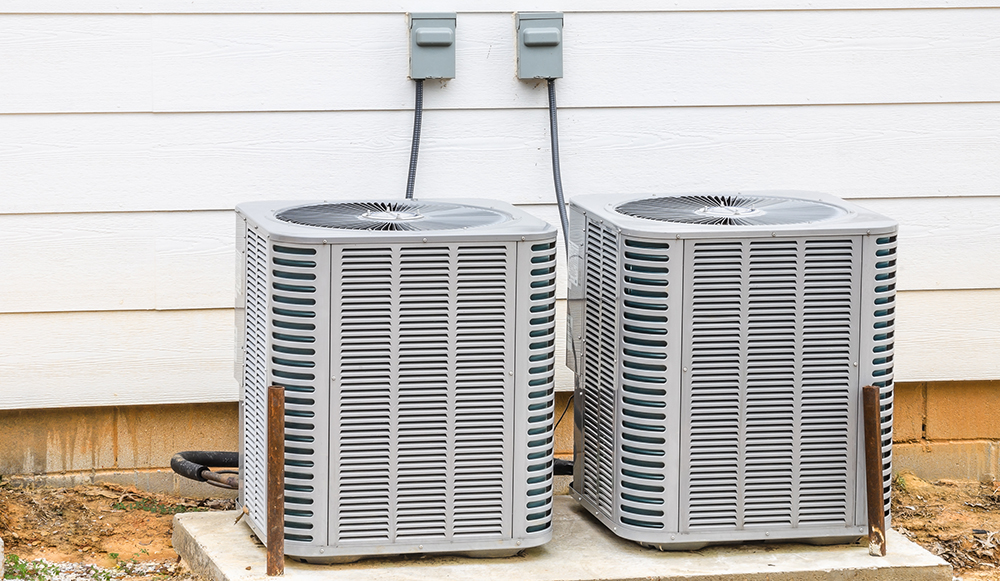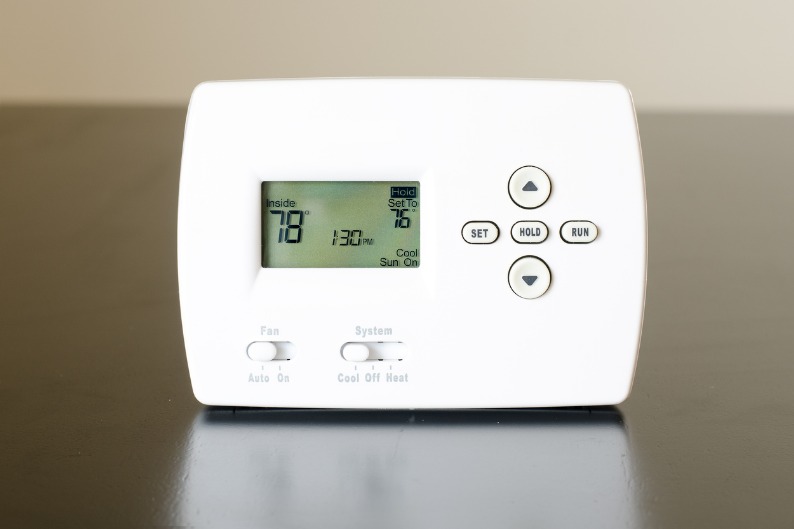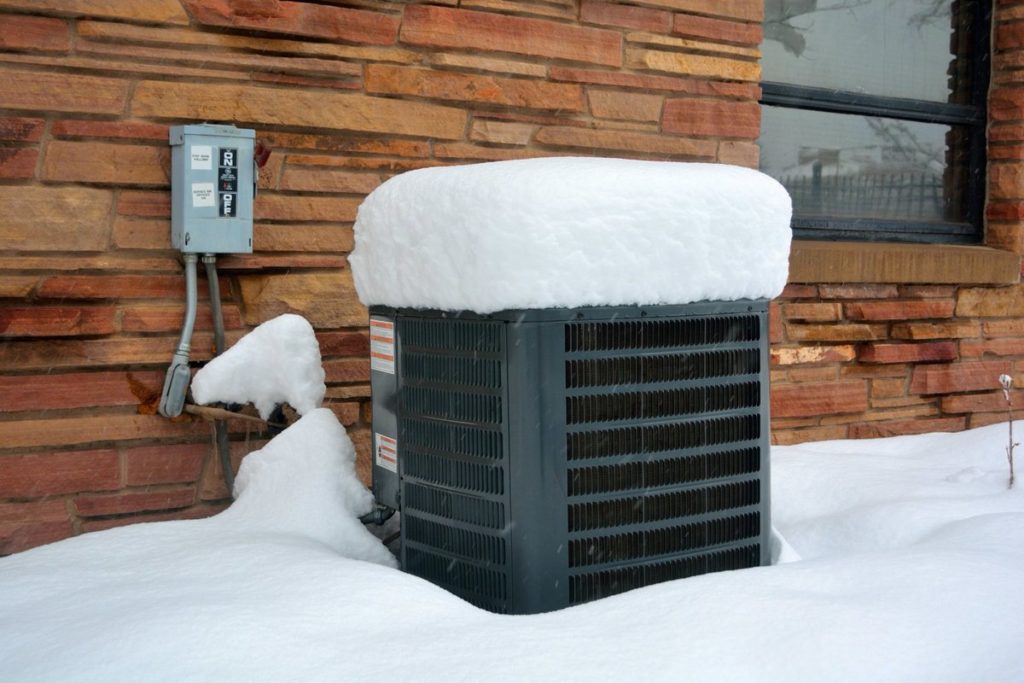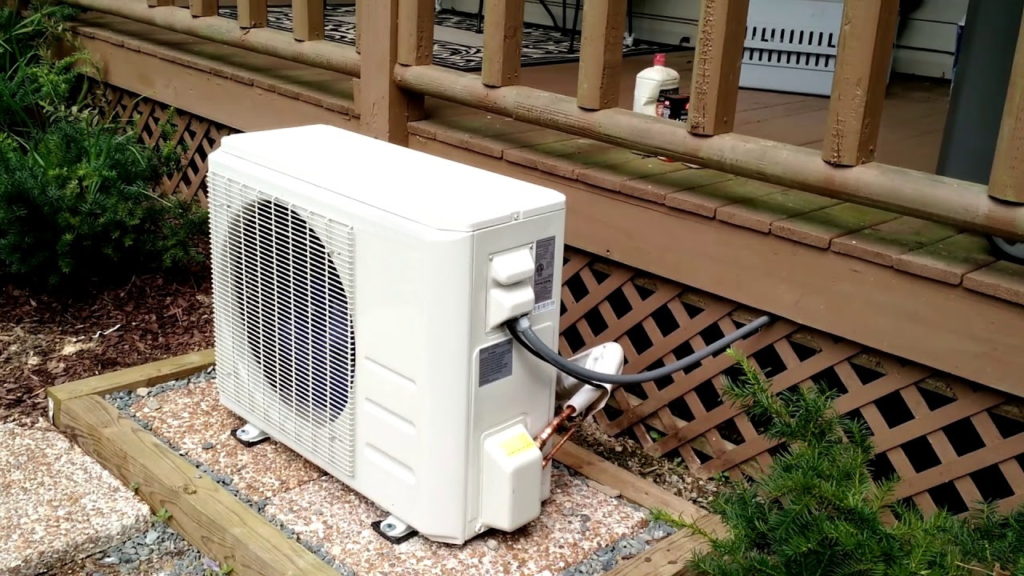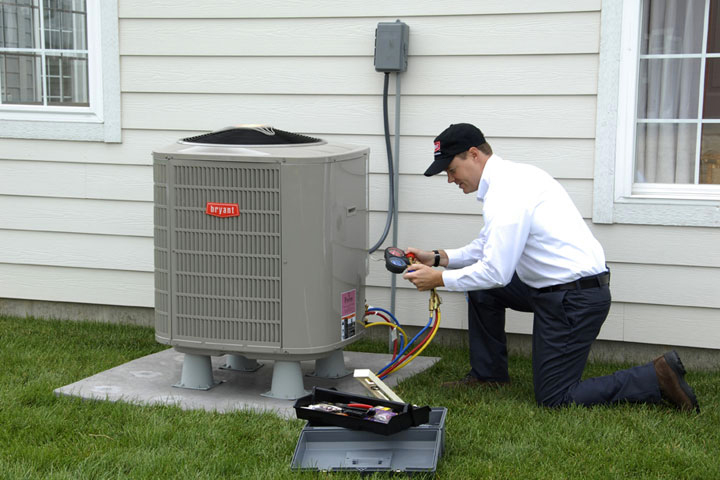

The best heat pumps regulate temperatures in the house by transferring heat from a warm place to a cool place Trusted Source Heat pump - Wikipedia A heat pump is a device used to warm and sometimes also cool buildings by transferring thermal energy from a cooler space to a warmer space using the refrigeration cycle, being the opposite direction in which heat transfer would take place without the application of external power. Common device types include air source heat pumps, ground source heat pumps, water source heat pumps and exhaust air heat pumps. Heat pumps are also often used in district heating systems. en.wikipedia.org . If the cool place is indoors, the heat pump will provide warmth. Alternatively, if the indoor temperatures are high, this component can cool the space by taking the heat out.
Admittedly, your HVAC technician will likely take it upon themselves to clean the heat pump while servicing your system. That said, they only come to your house about once or twice a year which means your heat pump is not being cleaned very often. We recommend you change that by cleaning the heat pump yourself. You don’t need to be an engineer to do it since we teach you how to clean a heat pump in the sections below.
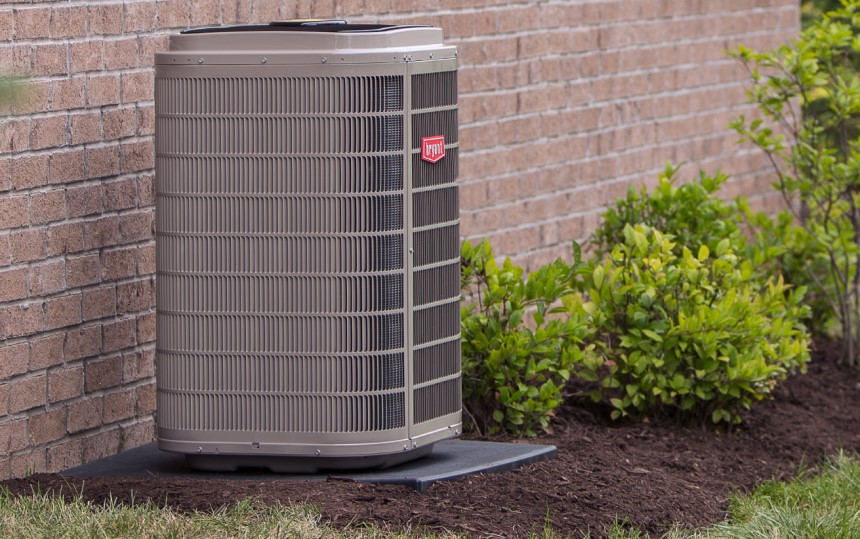
On the other hand, the indoor unit or “air handler” is responsible for bringing either hot or cold air into the house depending on the season. That said, even the air handler dust filters will get dusty over time, and you can use a vacuum with soft bristles to clean them.
Notably, the condenser unit and the air handler are connected by a refrigerant line, which the machine will use to transfer the heat. Heat pumps are also sometimes referred to as ductless systems since there is no ductwork associated with their installation and use.
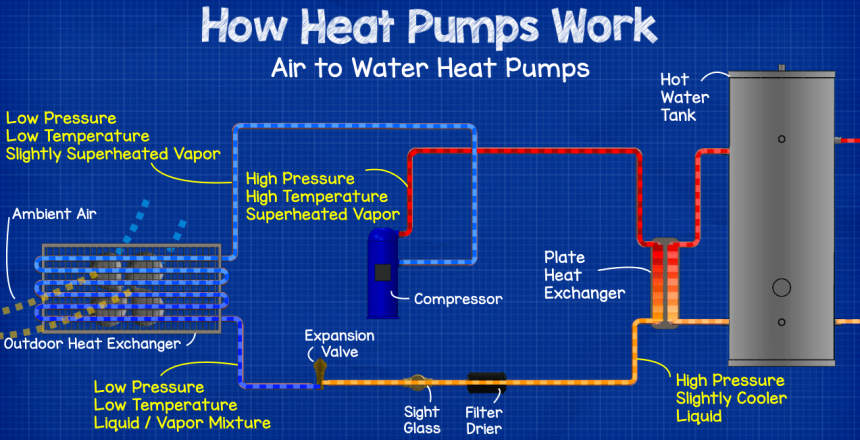
Set the temperatures to where you’re most comfortable and leave the device. It will work better if you don’t change the temperature settings often. Also, if you have other heating equipment in the house such as a furnace, you should account for that as you set the temperatures. Ideally, the temperature of your secondary heating device should be lower than that of your heat pump.
Notably, most people’s homes only have one type of heating system. Consequently, you may have to pick a side in the heat pump vs furnace debate if you don’t have a temperature regulation system installed as of yet. That said, the DAIKIN 9,000 BTU 19 as a heat pump does come highly rated if you go by what reviewers have been saying. It covers 350 sq. ft. rooms and smaller, has a remote and even comes with a self-diagnostic feature to warn you ahead of time that you may need your HVAC technician.
Remember to set the modes of operation on your heat pump manually. The two main modes include heat and cool, and you will use each according to the season. For winter, it’s obvious that you will choose the “heat” mode.
Lastly, account for the season when directing the airflow to ensure maximum efficiency. When the machine is blowing warm air into the room, it’s best to direct the airflow away from the residents in the house. Instead, direct the air to the floor as it will slowly rise.
As for cool air, you can direct it upwards. Remember to set the fan speed for optimum air circulation so you can enjoy the cooling or heating benefits of the heat pump to the fullest.
Like any other electrical piece of equipment that you come across, your heat pump can break down if it isn’t well taken care of. As such, you have to take steps to ensure that the heat pump is always in the best condition. Most people call in a technician to service the device once or twice a year and leave it at that.
The technician will clean the machine, replace worn out parts and repair any damage to the heat pump. While we encourage you to do this, it’s simply not enough if you want the tool to last. You can add checking on the indoor air handler and the outdoor condenser unit periodically to your maintenance schedule.
Notably, if the indoor unit’s dust filters are filled with dirt and debris, you should clean them. The heat pump’s manual should tell you exactly how to go about it, although a soft bristle vacuum has been known to be effective. Additionally, some heat pump models will have indicator lights to tell you when a cleaning session is needed.
As for the exterior unit, it needs space to work. You can eliminate all potential blockages, including shrubs and other equipment within a 3-feet radius of the machine. Despite eliminating various obstacles in the heat pump’s vicinity, you will still have to clean this outdoor unit regularly.
The recommended waiting period before you have to clean your heat pump is between 8 to 12 weeks. That means that you could have to clean the pump about six times a year which is a lot more than that bi-annual visit you get from your HVAC technician.
Now that you’ve taken up the mantle of heat pump coil cleaner it is essential you do it right otherwise you’ll damage the device and be forced to get a new one. First, you have to remember that this is an electric piece of equipment and that trying to clean it while it’s on will only lead to disaster. As such, locate the shutoff box for the heat pump and turn the switch inside it off. This will cut off all power to the machine.
Notably, the shutoff box should be close to the condenser unit on one of the exterior walls of your house. If there is none you can always use the main breaker box to cut off the power.
Also, we mentioned above that regular maintenance requires you to clear out bushes, obstacles and leaves from around the heat pump. Do this and remove any dirt and debris that may be on the unit. You may use gloves to keep your hands from getting dirty.
After that, remove the outer cover of the machine. In some cases, these covers are attached using screws so you may need a screwdriver. Place the cover to the side while ensuring you store the screws safely. This should expose the condenser fins. After that, it will be an easy matter to use a vacuum to clean the fins.
Notably, you should check the fins for damage or bends. If any of them are bent, you are advised to call a HVAC systems technician to correct the issue.
Don’t attempt to straighten the fins with any sharp objects as that will do more damage than good. After that, the top grille and fan may need to come off the machine as well. Use the screwdriver if you need to but be wary of any electrical connections that may get damaged as your pulling the grill off the machine.
Next, you can use a specialized cleaning solution made for condenser fins to wipe down the coils. A sponge or soft brush should be your go-to options when doing this. If you don’t have the condenser coil cleaning solution, a mixture of dish soap and water will work just fine. Also, a sprayer can help you clean the coils where a sponge or brush are absent.
Lastly, use a garden hose with running water to rinse off the device. Remember that the fins are fragile and the smallest mistake can bend them or damage them beyond repair. As such, you should use a low flow rate while spraying down the unit. Additionally, ensure the water spray hits the fins head-on. As you can probably guess, spraying from the sides may end up accidentally bending the fins.
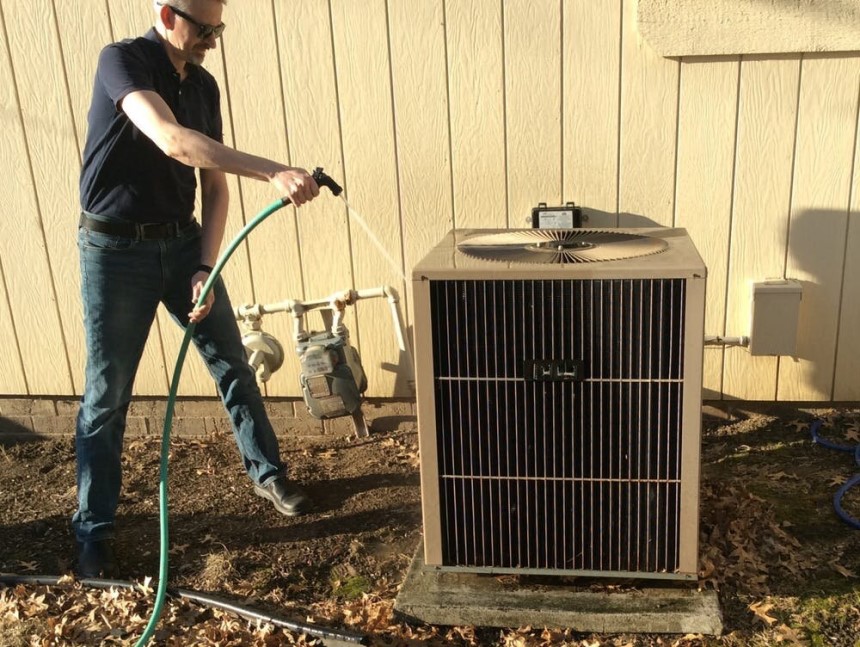
If you clean the heat pump regularly, you can expect better heat transfer in your space, better air quality and a lower utility bill thanks to the efficiencies of the machine. Your heat pump should also last a long time without breaking down.
Finally, some of you may be better off not attempting to clean your heat pumps. This is especially true if it was installed in an inconvenient location such as your roof or high up on one of your walls.
Of course, if it’s on the roof, it becomes more complicated to clean the device. However, a HVAC professional is only a phone call away despite being an added expense.
Whether you have a Daikin, Goodman or any other popular heat pump model, you should learn about the cleaning process highlighted above. Don’t be the person who waits for their technician to come through for them twice a year.
As you’ve seen, this could have negative consequences such as higher power bills and even a shorter lifespan for the machine. That said, if you don’t feel confident about the whole cleaning process, you can call a professional for help. You can also bookmark this page if you need to remind yourself how to clean a heat pump every few weeks.
